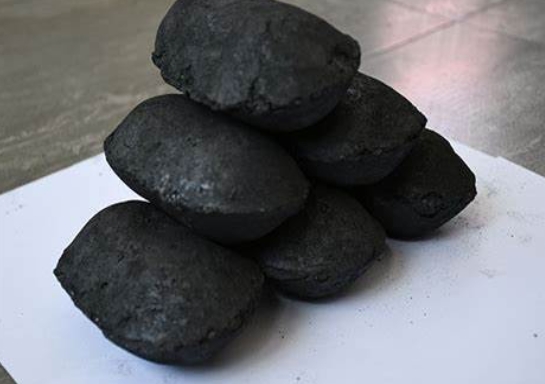
Wholesale Electrode Paste, also known as carbon electrode paste, is used to make carbon electrodes. It can be applied in ferroalloy electric furnaces and equipment containing calcium carbide. Due to its conductivity, it is an important component of the aluminum manufacturing process. The carbon electrodes are also used to deliver electrical energy into the mix of charge in submerged-arc furnaces. Carbon electrodes can then convert electricity to heat, which is used for melting aluminum and other metals. This paste can be ordered in either a briquette or a cylinder form, and it is customizable to suit specific specifications for electric furnaces.
This paste is composed of carefully mixed calcined coal tar, petroleum coke and other additives. The paste is placed on the outer surface of the cylinder steel case, and bakes to an electrode once inside the electric oven. Its mechanical and thermal strength allows it to resist the high temperature of the electric oven, which could affect its conductivity.

Its adhesive properties allow it to stick to metallic supports in electric heaters. The paste's adhesive properties are essential for the maintenance of a sturdy and durable carbon-electrode assembly capable of resisting electrical and mechanical forces in this environment. Its high thermal resistance and low coefficient of expansion also help to maintain the integrity of the carbon electrode.
Carbon electrode paste is one of the most durable and effective conductive pastes available. Adams developed the nonaqueous Carbon Electrode Paste (CPE), which has remained a popular product for many decades. But other CPE configurations, using different surfactants and graphite particles have become available. They offer several advantages to traditional CPE mixtures.
A major benefit of the nonaqueous CPE, in addition to superior conductivity is its ability to allow users to carry out electrochemical tests using organic solvents alone or mixed with water. The surfactant helps minimize the passivation on the electrode surface caused by organic solvent-soluble nonpolar reactions.
Another benefit of this type of CPE is that it can be easily removed from the skin when a test is complete. The benefit is that it saves both the patient and the technician the trouble of having to disturb a test to change the electrode or to have to clean up the trace. This easy removal is facilitated by Ten20's washable, non-drying formula. Because of its low resistance and slick surface, it also reduces the skin's resistance. As a result, neurodiagnostic tests are more accurate and patient comfort is improved.

Write a Message